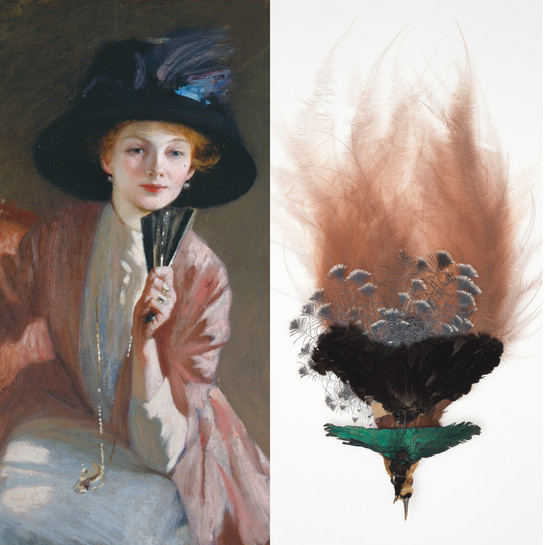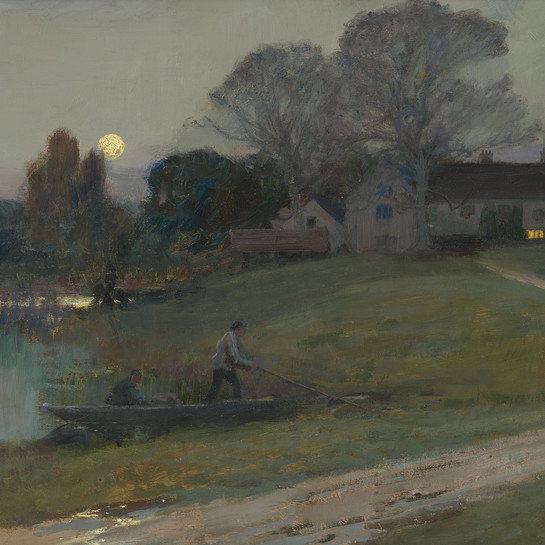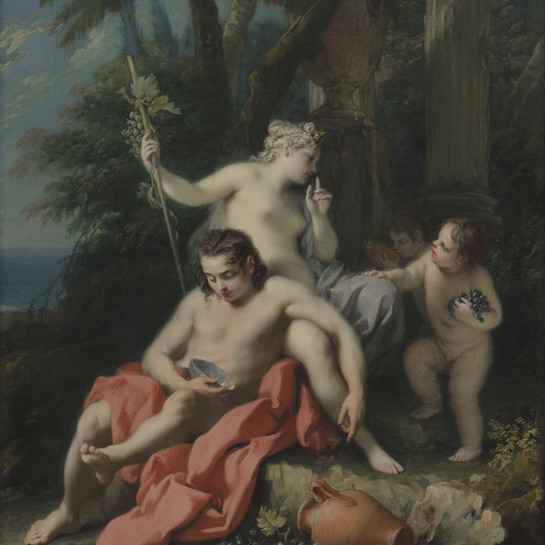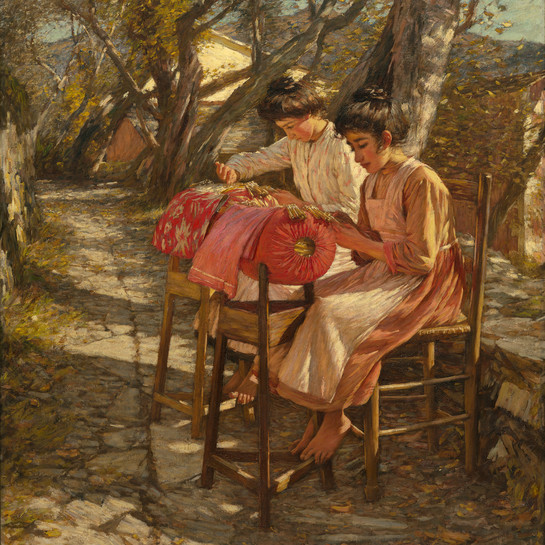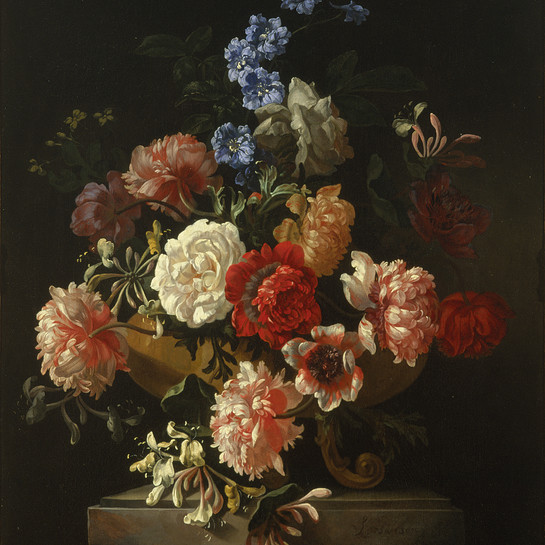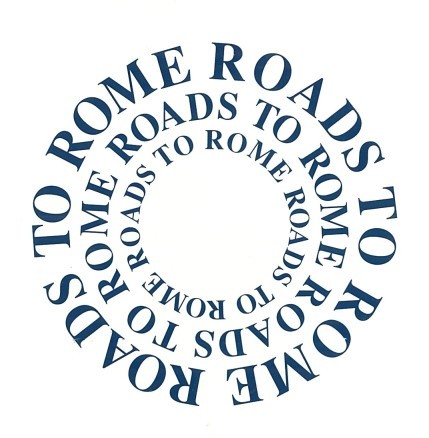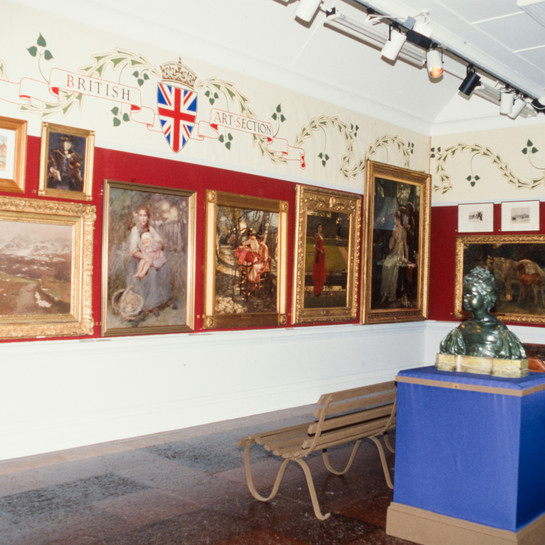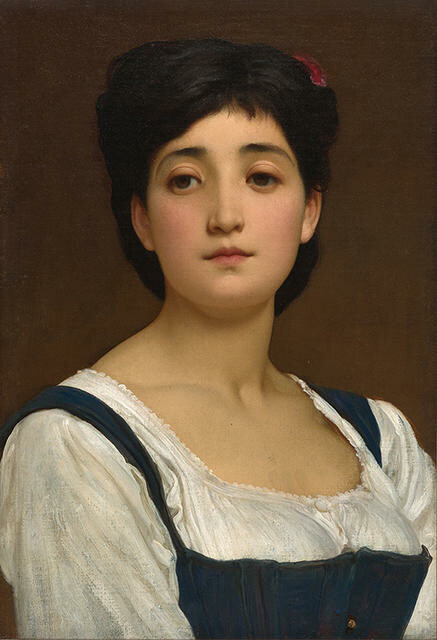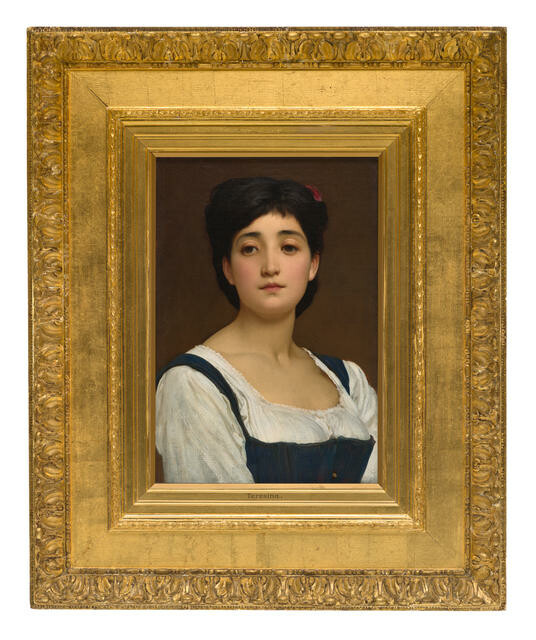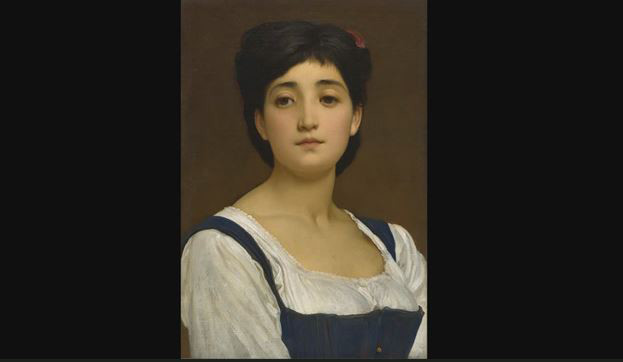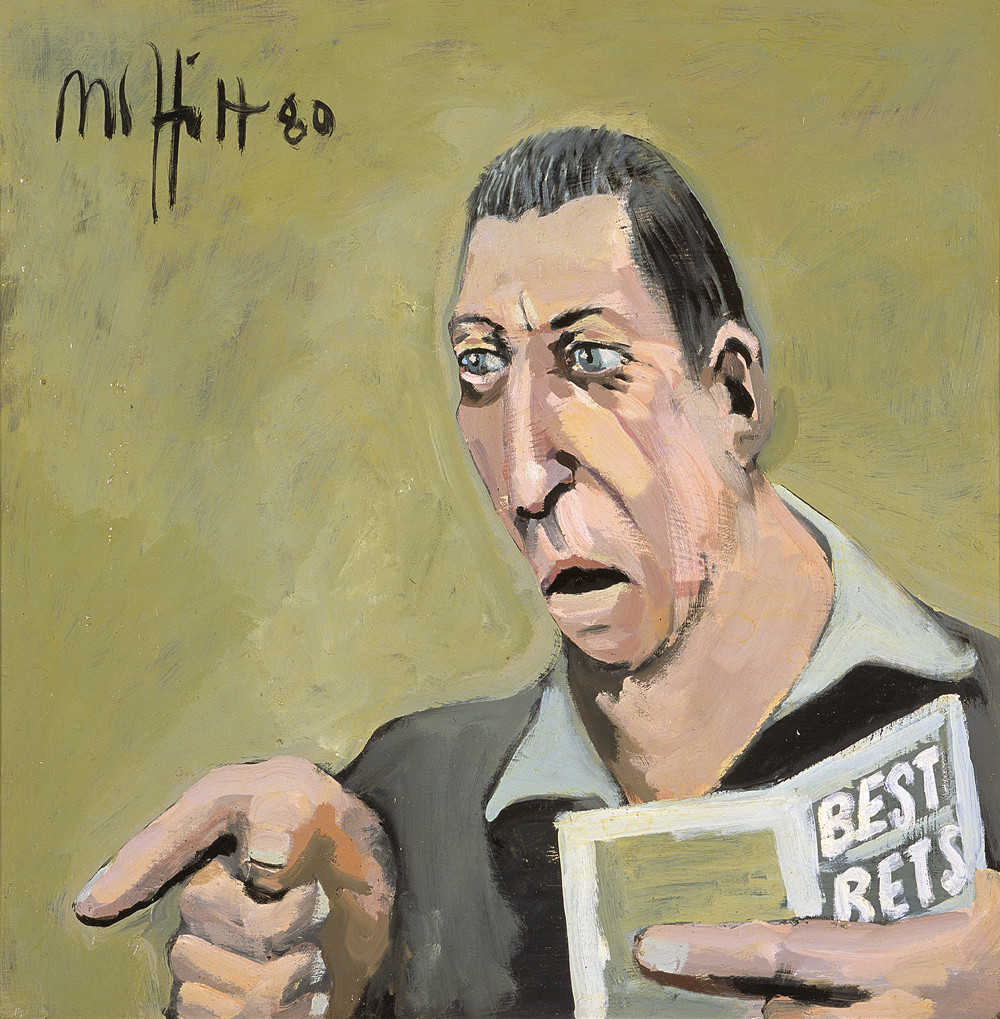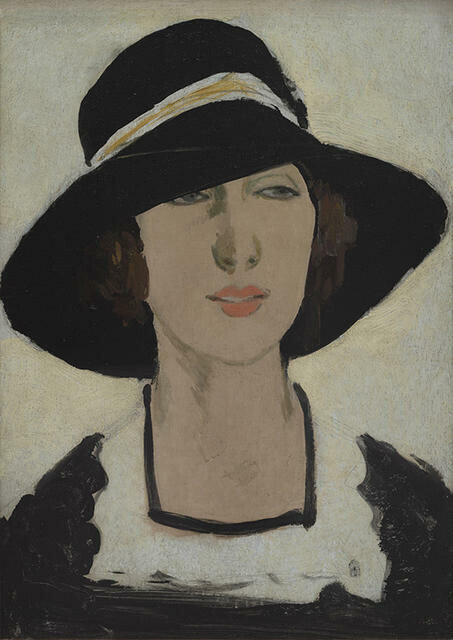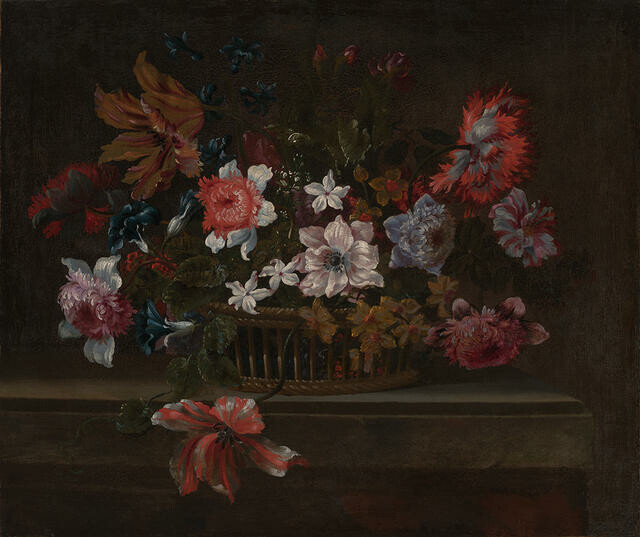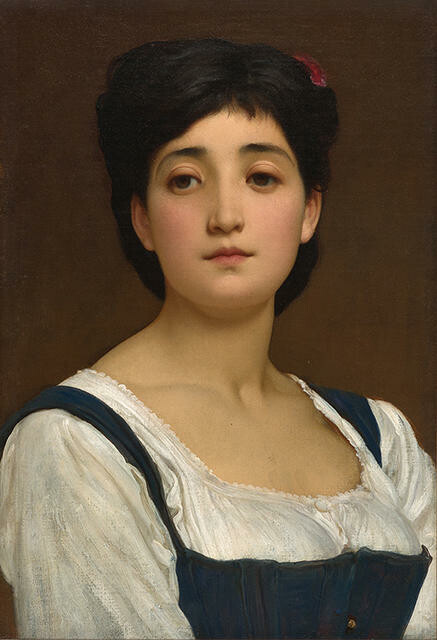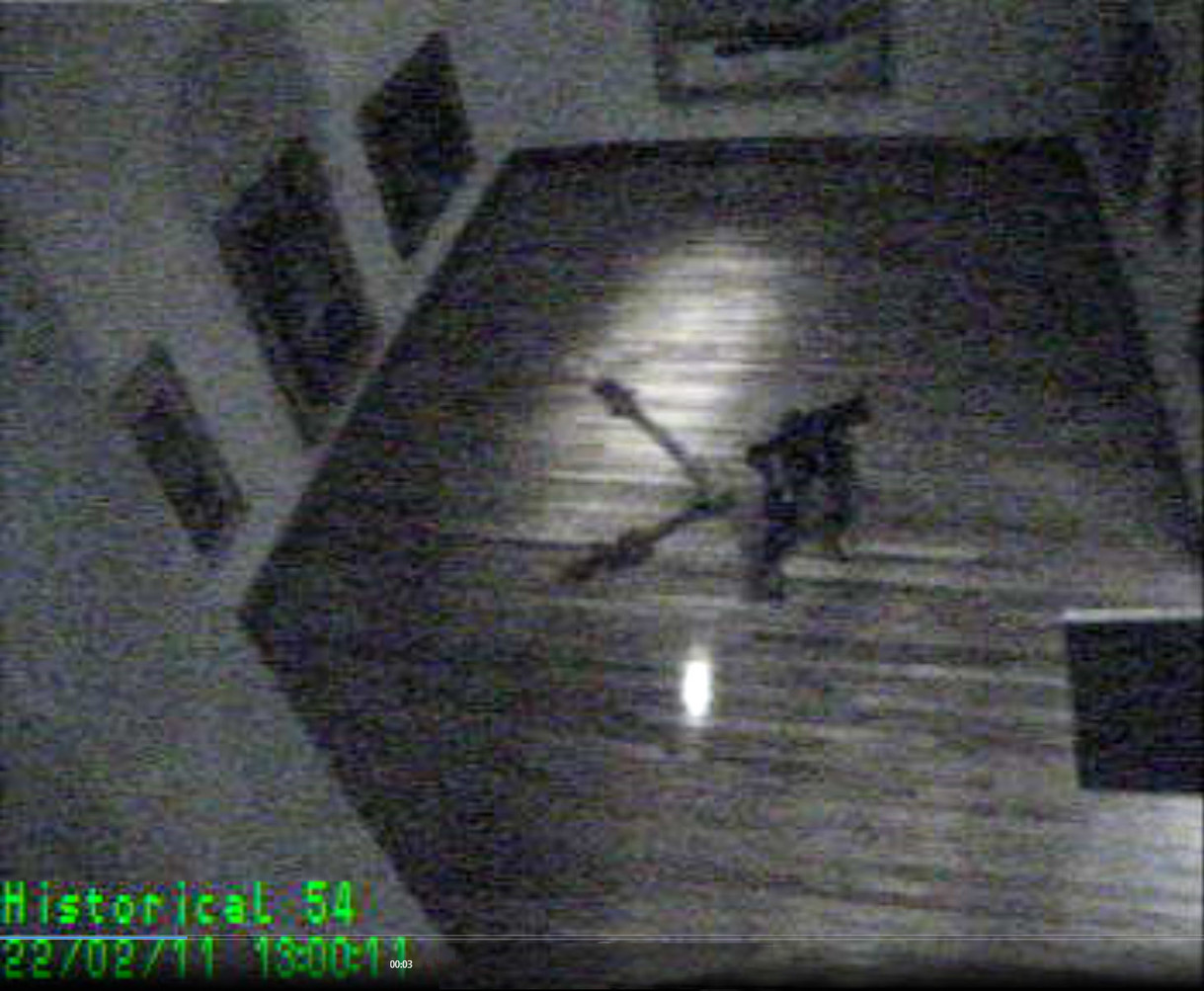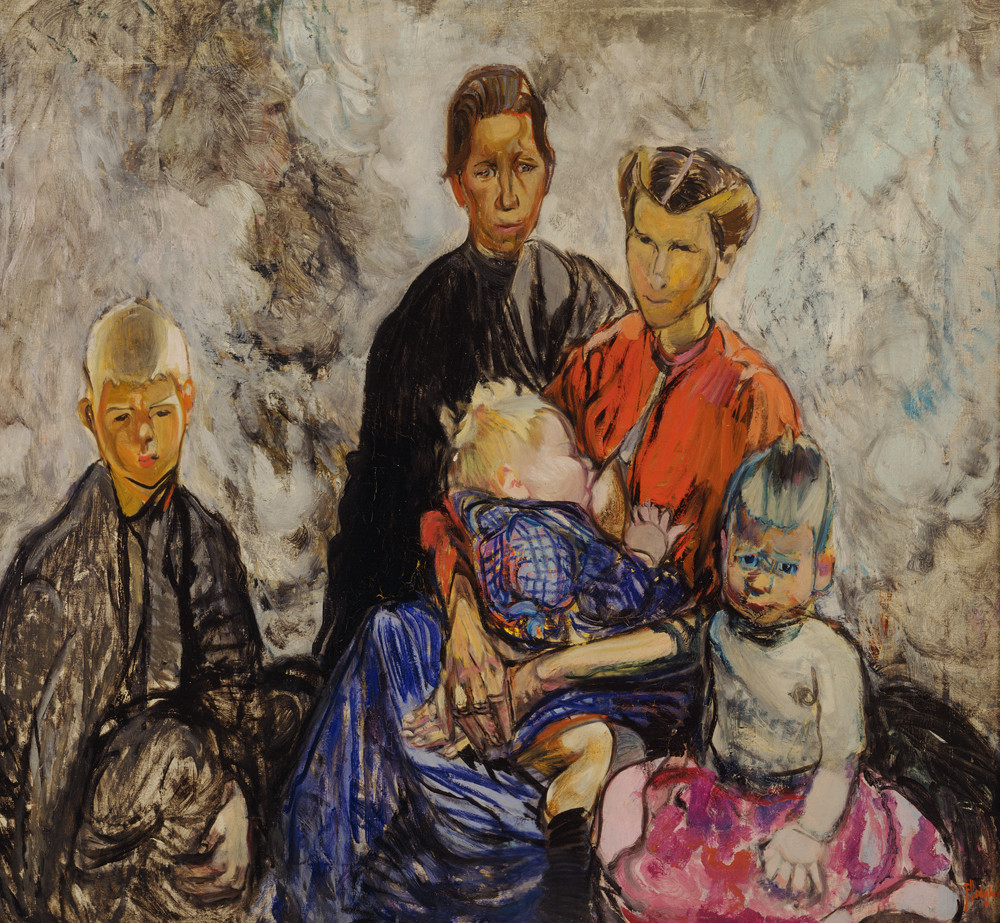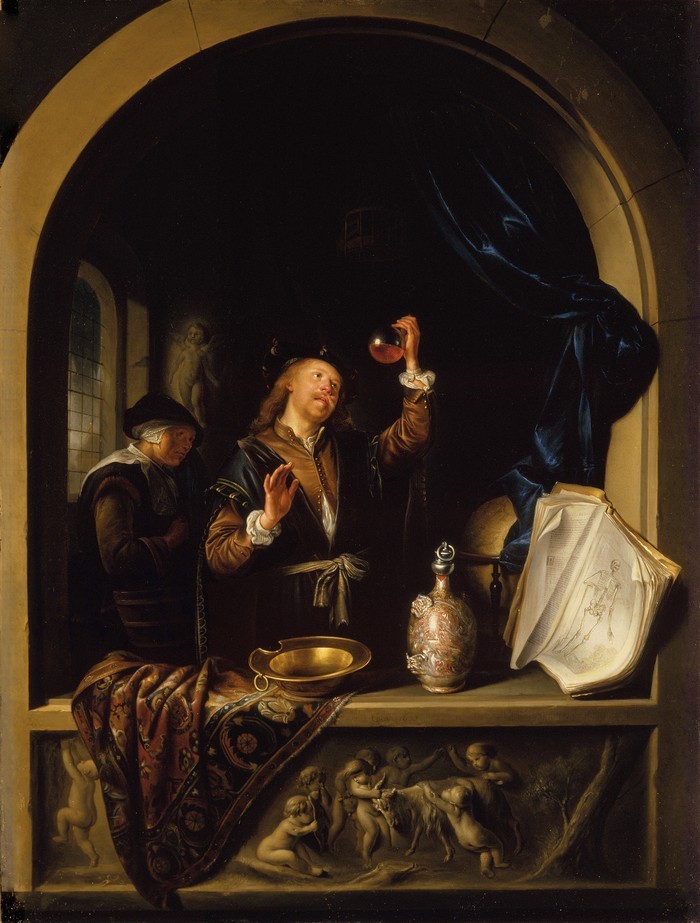Lord Frederic Leighton
British, b.1830, d.1896
Teresina
- c. 1874
- Oil on canvas board
- Presented by the Canterbury Society of Arts, 1932
- 604 x 495mm
- 69/358
Tags: academicism, people (agents), portraits, women (female humans)
Exhibition History
The Moon and the Manor House, 12 November 2021 – 1 May 2022
Frederic Leighton was probably the single most influential figure in the English-speaking art world of the late nineteenth century: he was made president of the Royal Academy and knighted by Queen Victoria in 1878, and later made a baron. He was also held in high regard in Australasian art circles. When, in 1887, he agreed to purchase, on behalf of the Canterbury Society of Arts, £250 worth of Royal Academy paintings – “a few works of an educational character” – it was regarded as a local triumph. Leighton’s captivating painting of a young Roman woman, Teresina, was first shown at the Royal Academy in 1876, and came to New Zealand for the Christchurch International Exhibition thirty years later. Its purchase by Canterbury Society of Arts was regarded as another notable coup.
Persistent encounters, 10 March 2020 – 19 September 2021
The name Teresina appears in a crowded notebook list of models sketched by Frederic Leighton during his 1874 stay in Rome, to where he habitually relocated from London each autumn. Leighton was president of the Royal Academy at that time, and Teresina was one of four works he included in the big summer show of 1876.Like McIntyre’s elegant portrait study, it seems a representation of an impossible ideal, with the similar influence of early sixteenth century Renaissance portraiture. The enigmatic Teresina might almost be Leighton’s updated Mona Lisa; he is known to have studied and sketched da Vinci’s (then surprisingly little-known) portrait at the Louvre in Paris in 1856.
Weight of Sunlight, 15 September 2017 – 16 September
Teresina was one of four works shown by the leading British painter Frederic Leighton at the Royal Academy in London in 1876. His model was a young Italian woman in Rome, to where he habitually relocated from London each autumn. The name Teresina appears in a crowded notebook list of models sketched during his stay there in 1874. Italy became Leighton’s second home. He first visited Rome aged ten in 1840, when (for his mother’s health) the family left England for the Continent, spending time Germany, Switzerland and Italy. In Rome he took his first drawing classes, and (as an early biographer noted) ‘the buildings, the fountains, the ruins, the models awaiting hire on the Piazza di Spagna, fascinated him, and he filled many sketch-books with records of all the picturesque scenes that struck him as so new and wonderful.’ Leighton remained enamoured with Rome and with travel, finding subject-matter for his ambitious, classically-themed narrative paintings from multiple tours through Europe as well as visits to North Africa and the Holy Land.
Treasury: A Generous Legacy, 18 December 2015 – 4 December 2016
The name Teresina appears in a notebook list of models sketched by Frederic Leighton during an 1874 stay in Rome. Italy was his second home; he spent much of his childhood and later studied there, and he habitually relocated there from London each autumn.
Leighton showed Teresina at the Royal Academy in London in 1876. After being in private ownership for thirty years, the painting was sent to Christchurch for the 1906–07 New Zealand International Exhibition, joining the largest collection of British art shown at a Colonial exhibition. Purchased there by the Canterbury Society of Arts, Teresina was presented to the city's new public art gallery in 1932.
Teresina is part of a series of half and three-quarter length studies of young women Frederic Leighton painted during the 1870s. The models for these were English, Spanish, or Italian women who posed in their peasant costume or other fancy dress. This painting is an example of the idealised, softened presentations favoured by the 19th century academic realism style. The impeccable brushwork merges indistinguishably into the beautifully modulated surfaces and has very subtle tonal shading. Born in Yorkshire, Leighton was the son of a prosperous doctor. He travelled on the Continent from an early age and studied widely in Europe as well as London. He began exhibiting at the Royal Academy in 1855 where the painting he exhibited, Cimabue’s Madonna carried through the streets of Florence, was purchased by Queen Victoria. This secured his reputation as an important Victorian artist. He was knighted in 1878, made a baronet in 1886 and in 1896 was raised to the peerage, becoming Lord Leighton of Stretton. (Opening Gallery hang, May 2003)
Leighton's works often featured young English, Spanish or Italian girls dressed in peasant or national costumes. These paintings were titled with girls' first names, such as 'Catarina', 'Serafina' or 'Teresina'. It may be an oil study, intended as a preparatory work for one of his major neoclassical compositions, as Leighton would often finish a pleasing oil study to this degree of completion. It was exhibited in 1876 at the Royal Academy and is a fine example of the idealised, softened presentations favoured by the 19th century academic style. With the brushwork merging indistinguishably into the beautifully modulated surfaces and the subtle tonal shading, it illustrates the consummate skill of one of the leading artists of Victorian England. (Label date unknown)
